Related Research Articles
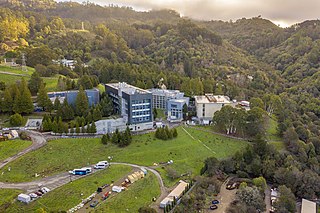
Lawrence Berkeley National Laboratory (LBNL) is a federally funded research and development center in the hills of Berkeley, California, United States. Established in 1931 by the University of California (UC), the laboratory is sponsored by the United States Department of Energy and administered by the UC system. Ernest Lawrence, who won the Nobel prize for inventing the cyclotron, founded the Lab and served as its Director until his death in 1958. Located in the Berkeley Hills, the lab overlooks the campus of the University of California, Berkeley.

Argonne National Laboratory is a federally funded research and development center in Lemont, Illinois, United States. Founded in 1946, the laboratory is owned by the United States Department of Energy and administered by UChicago Argonne LLC of the University of Chicago. The facility is the largest national laboratory in the Midwest.

The Molecular Foundry is a nanoscience user facility located at the Lawrence Berkeley National Laboratory in Berkeley, California, and is one of five Nanoscale Science Research Centers sponsored by the United States Department of Energy.
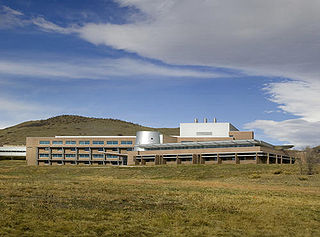
The National Renewable Energy Laboratory (NREL) in the US specializes in the research and development of renewable energy, energy efficiency, energy systems integration, and sustainable transportation. NREL is a federally funded research and development center sponsored by the Department of Energy and operated by the Alliance for Sustainable Energy, a joint venture between MRIGlobal and Battelle. Located in Golden, Colorado, NREL is home to the National Center for Photovoltaics, the National Bioenergy Center, and the National Wind Technology Center.

Armand Paul Alivisatos is an American chemist and academic administrator who has served as the 14th president of the University of Chicago since September 2021. He is a pioneer in nanomaterials development and an authority on the fabrication of nanocrystals and their use in biomedical and renewable energy applications. He was ranked fifth among the world's top 100 chemists for the period 2000–2010 in the list released by Thomson Reuters.

The Bevatron was a particle accelerator — specifically, a weak-focusing proton synchrotron — at Lawrence Berkeley National Laboratory, U.S., which began operating in 1954. The antiproton was discovered there in 1955, resulting in the 1959 Nobel Prize in physics for Emilio Segrè and Owen Chamberlain. It accelerated protons into a fixed target, and was named for its ability to impart energies of billions of eV.
The National Center for Electron Microscopy (NCEM) was a U.S. Department of Energy national user facility at Lawrence Berkeley National Laboratory in Berkeley, California, for unclassified scientific research using advanced electron microscopy. It has since been merged with the Molecular Foundry, also located at Berkeley Lab.
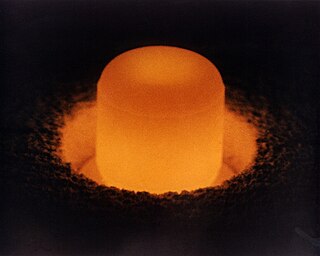
Plutonium-238 is a radioactive isotope of plutonium that has a half-life of 87.7 years.

The Advanced Light Source (ALS) is a research facility at Lawrence Berkeley National Laboratory in Berkeley, California. One of the world's brightest sources of ultraviolet and soft x-ray light, the ALS is the first "third-generation" synchrotron light source in its energy range, providing multiple extremely bright sources of intense and coherent short-wavelength light for use in scientific experiments by researchers from around the world. It is funded by the US Department of Energy (DOE) and operated by the University of California. The current director is Dimitri Argyriou.

Steven Chu is an American physicist and former government official. He is a Nobel laureate and was the 12th U.S. secretary of energy. He is currently the William R. Kenan Jr. Professor of Physics and Professor of Molecular and Cellular Physiology at Stanford University. He is known for his research at the University of California, Berkeley, and his research at Bell Laboratories and Stanford University regarding the cooling and trapping of atoms with laser light, for which he shared the 1997 Nobel Prize in Physics with Claude Cohen-Tannoudji and William Daniel Phillips.
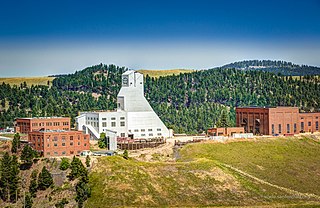
The Sanford Underground Research Facility (SURF), or Sanford Lab, is an underground laboratory in Lead, South Dakota. The deepest underground laboratory in the United States, it houses multiple experiments in areas such as dark matter and neutrino physics research, biology, geology and engineering. There are currently 28 active research projects housed within the facility.
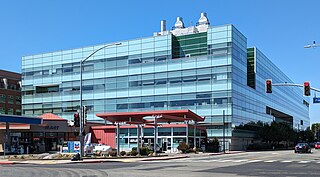
The Joint BioEnergy Institute (JBEI) is a research institute funded by the United States Department of Energy. JBEI is led by the Lawrence Berkeley National Laboratory, and includes participation from the Sandia National Laboratory, Lawrence Livermore National Laboratory, as well as UC Berkeley, UC Davis, Iowa State University, and the Carnegie Institute. JBEI is located in Emeryville, California.

Edward Joseph Lofgren was an American physicist in the early days of nuclear physics and elementary particle research at the Lawrence Berkeley Laboratory (LBL). He was born in Chicago. He was an important figure in the breakthroughs that followed the creation of the Bevatron, of which he was the director for a time.
ARPA-E, or Advanced Research Projects Agency–Energy is a United States government agency tasked with promoting and funding research and development of advanced energy technologies. It is modeled after the Defense Advanced Research Projects Agency (DARPA).
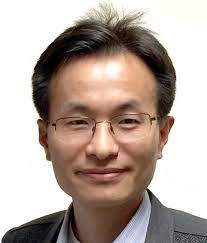
Peidong Yang is a Chinese–American chemist, material scientist, and businessman. He is currently a professor at the University of California, Berkeley and a member of the American Academy of Arts and Sciences. He is a Professor of Chemistry and a Professor of Materials Science. His research group studies the synthesis of nanomaterials and their electronic and optical properties. He is also a Department Head at the Joint Center for Artificial Photosynthesis, Senior Faculty Scientist at Lawrence Berkeley National Laboratory, and Deputy Director of the Center of Integrated Nanomechanical Systems (COINS). He is an associate editor of the Journal of the American Chemical Society, an American Chemical Society Journal.
Berkeley Robotics and Human Engineering Laboratory is managed and operated by University of California, Berkeley. The lab conducts scientific research on the design and control of a class of robotic systems worn or operated by humans to increase human mechanical strength.
Shyh Wang Hall(王适大楼), or Wang Hall, is a building on the University of California, Berkeley campus. Located in the Berkeley Hills, it houses supercomputers designed to process 2 quadrillion calculations per second each. It is in the building complex of the Lawrence Berkeley National Laboratory. It was designed by Perkins&Will of San Francisco and opened in November 2015. It houses the National Energy Research Scientific Computing Center.
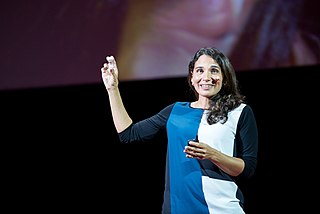
Rebecca Abergel is a professor of nuclear engineering and of chemistry at University of California, Berkeley. Abergel is also a senior faculty scientist in the chemical sciences division of Lawrence Berkeley National Laboratory, where she directs the Glenn T. Seaborg Center and leads the Heavy Element Chemistry research group. She is the recipient of several awards for her research in nuclear and inorganic chemistry.
Natalie Ann Roe is an experimental particle physicist and observational cosmologist, and the Associate Laboratory Director for the Physical Sciences Area at Lawrence Berkeley National Laboratory (LBNL) since 2020. Previously, she was the Physics Division Director for eight years. She has been awarded as the Fellow of American Physical Society (APS) and American Association for the Advancement of Science (AAAS) for her exceptional scientific career and contributions.
Aindrila Mukhopadhyay is an American scientist who is the Division Deputy of the Biological Systems and Engineering Division at Lawrence Berkeley National Laboratory. Her research involves microbial engineering for the production of biofuels. She was nominated a Fellow of the American Association for the Advancement of Science in 2022.
References
- ↑ Jeremy Thomas (26 May 2015). "Berkeley lab unveils new solar energy center aimed at producing fuel from sunlight – The Mercury News". Mercurynews.com. Retrieved 2017-04-12.
- ↑ Bloom, Jonathan. "Lawrence Berkeley National Laboratory in Berkeley unveils new solar energy facility". abc7news.com. Retrieved 2017-04-12.
- ↑ "伯克利启用新的太阳能研究中心_金山科技_旧金山在线". Sf.uschinapress.com. 2015-05-26. Retrieved 2017-04-12.
- ↑ "The Future of Energy Looks Bright at Berkeley Lab | Berkeley Lab". Newscenter.lbl.gov. 2015-05-26. Retrieved 2017-04-12.